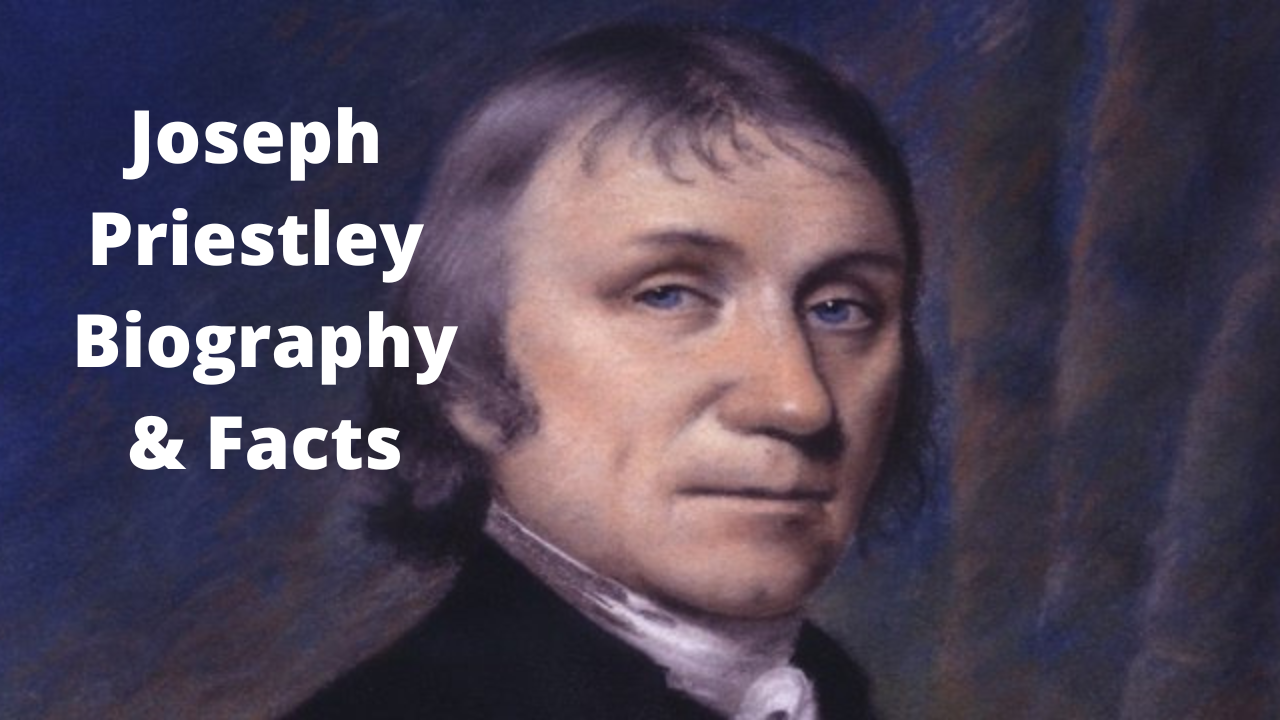
Joseph Priestley Biography & Information
Joseph Priestley (1733-1804) – British dissenter priest, naturalist, philosopher and public figure. He is best known as an outstanding chemist who discovered oxygen.
There are many interesting facts in the biography of Joseph Priestley, which we will tell about in this article.
So, here is a short biography of Priestley.
Biography of Joseph Priestley
Joseph Priestley was born on March 13, 1733 in the English town of Fieldhead. He grew up and was raised in a poor weaver family ( finisher of cloth). Since the parents was not able to provide enough facilities to their son, they gave him to be raised by his mother’s aunt, Sarah Keighley.
Even in early childhood, Priestley began to show aptitude for science, due to this reason, the aunt decided to give him a decent education. At the same time, the woman wanted the boy to become a clergyman. It is important to note that as a teenager, his religious beliefs were different from those of the Church of England.
Consequently, Joseph entered the academy at Daventry, where he studied philology and theology. It is noteworthy that this educational institution trained dissenting priests – opponents of the Anglican Church.
After receiving his diploma, Priestley had great knowledge not only in the field of theology, but also well versed in the work of modern and ancient philosophers. Curiously, he was a polyglot, speaking 9 languages, including Latin, Ancient Greek and Hebrew.
Religious and scientific activities of Joseph Priestley
Joseph Priestley began his career as a preacher in dissenting communities. At the age of 22, he became assistant pastor in the Presbyterian community, but later his unorthodox religious beliefs led Joseph from Calvinism to rationalist Unitarianism.
By the way, Unitarianism is an anti-Trinitarian movement in Protestantism that rejects the doctrine of the Trinity. After some time, Priestley began teaching. Then he began to show a keen interest in the natural sciences, thanks to which he received world recognition.
In his youth, Joseph managed to meet Benjamin Franklin (Founding Father of the United States) , who had a serious influence on him. In particular, they both showed great interest in the nature of electricity. Soon Priestley published his famous 2-volume work “The History and the Present State of Electricity, with Original Experiments.”
This work gained recognition in scientific circles overnight, and Joseph himself was elected a member of the Royal Society of London. The work contained information about various experiments with electricity, which was supported by visual illustrations.
Priestley put forward a hypothesis regarding the similarity of Newton’s gravitational force and electrical interactions. Years later, this theory form the basis of the famous Coulomb’s law.
Joseph Priestley- Discoveries in chemistry
Despite the fact that Joseph Priestley reached great heights in various fields of science, he made the greatest number of discoveries in chemistry. Today he is considered one of the founders of modern chemistry. Most of all he studied the nature of gases.
One day Priestley became interested in the nature and principle of action of the bubbles that appear during the fermentation of beer. He placed transparent flasks over the vat to collect the substance released from the bursting bubbles.
It was later discovered that the gas, now known as “fixed air”, prevented combustion and easily dissolved in water, giving it an unusual taste. In the late 1760s, he introduced the first artificially carbonated water bottle, which became the “root” of modern carbonated drinks.
By the time of his biography, Joseph was already married to Mary Wilkinson, with whom he lived for more than 30 years. He became the author of a number of important discoveries in the field of pneumatic chemistry. In the early 1770s, he discovered photosynthesis, claiming that air “tainted” by combustion or breathing becomes breathable again through the action of plants.
The fact is that before that it was believed that the nutrition of plants occurred exclusively through water. However, the experiments of Joseph Priestley refuted this hypothesis when he placed a burning candle and a mouse under a transparent container.
Soon the candle stopped burning, and the mouse was suffocating from lack of oxygen. The scientist decided to check what would happen if an indoor flower was placed under the same conditions. The experiment showed that the flower not only did not die, but cleared the “polluted” air under the container. At the same time, the candle continued to burn, and the mouse continued to live.
A few years later, the scientist was able to prove that in the process of photosynthesis, plants absorb carbon dioxide, after which they release oxygen. At the same time, Joseph was the first to be able to obtain hydrogen chloride, monoxide and ammonia.
Along with other colleagues, Priestley substantiated the statement about the complex composition of the air. In particular, in 1774 he made a major discovery, having managed to isolate oxygen, which brought him worldwide fame. After some time, he was able to isolate silicon fluoride, sulfur dioxide and carbon monoxide.
Although there were some errors in Joseph’s beliefs in general, his accomplishments were of tremendous importance to science. In addition to chemistry, he was also fond of optics. It is worth noting that he is the author of The History and State of the Art of Discoveries Related to Vision, Light and Colors.
Social and philosophical activities of Priestley
Despite the authority and international recognition, the scientist throughout his life was forced to change his place of residence for the sake of a decently paid place of work.
Priestley spent the longest time in Birmingham. Here, in the period 1780-1791, he served as a parish priest, and in his free time he set up chemical experiments. Then he was a member of the “Lunar Society”, where various scientific problems were discussed.
It is worth noting that Joseph was fond of philosophy, being a supporter of materialism. At the same time, he believed that all the laws of the material world were created by the divine mind. Thus, he classified himself as a deist.
By the way, deism means a religious and philosophical trend that recognizes the existence of God and the creation of the world by him, but denies the majority of supernatural phenomena, including religious dogmatism.
In terms of politics, Joseph Priestley regarded himself as a representative of modern liberal theory. He promoted the expansion of civil rights and freedom. He also welcomed the Great French Revolution, defending the idea of equality and religious tolerance.
For these and other reasons, Priestley had many enemies in the Conservative camp. In the summer of 1791, when he, together with like-minded people, celebrated the anniversary of the Bastille in his own home , civil and ecclesiastical authorities provoked an attack on his home.
An angry mob of Anglicans destroyed and then set fire to the scientist’s house. As a result, Joseph’s laboratory and scientific manuscripts were burned in the fire. He himself and his family members miraculously survived. At the same time, maddened Anglicans destroyed 4 dissenter chapels, 27 buildings and a meeting place for members of the Lunar Society.
The massacre of Priestley caused a loud international scandal. The French government then helped rebuild Joseph’s home and laboratory. However, the scientist decided to leave the country and go to the United States. Here he lived until his death, becoming the founder of the famous school of anti-Trinitarian deists.
Death of Joseph Priestley
In the last years of his life, the chemist was mainly engaged in writing. Joseph Priestley died on February 6, 1804 at the age of 70.
If you liked Priestley’s short biography – share it on social networks.
Related Articales
Recently Posted
-
भगवान गौतम बुद्ध जीवन परिचय | Gautam Buddha in Hindi
December 15, 2022. -
कार्बन के अपररूप Allotropes of Carbon in Hindi
November 5, 2022. -
मिश्र धातु किसे कहते हैं? उपयोग, नाम, गुण Alloy in Hindi
July 27, 2022. -
गलनांक किसे कहते हैं? परिभाषा, उदाहरण Melting Point in Hindi
July 20, 2022. -
परिमाप किसे कहते हैं? Perimeter in Hindi
July 19, 2022.




